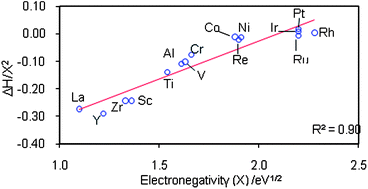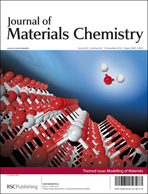Quantifying the relationship between interface chemistry and metal electronegativity of metal–semiconductor interfaces†
Abstract
To reveal the role of interface chemistry in Schottky barrier formation for metals on a given semiconductor, we re-examine the reported empirical models that correlate Schottky barrier heights or metal work functions to some bulk properties like eutectic temperatures or heats of formation of metal–semiconductor compounds. We find much improved linear relations between the bulk properties (e.g. heat of formation ΔH) and metal electronegativity X by plotting

- This article is part of the themed collection: Modelling of Materials

 Please wait while we load your content...
Please wait while we load your content...